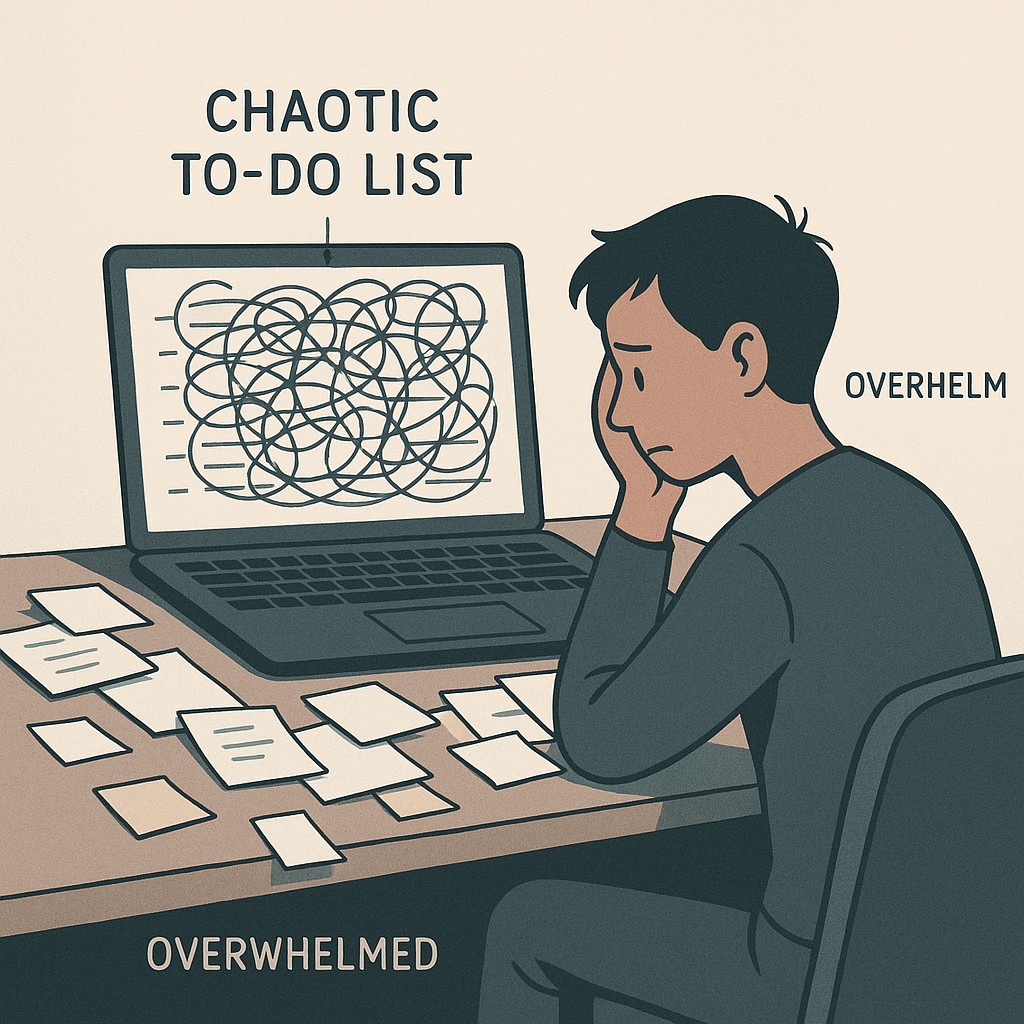How I Finally Got Moving: Small Steps for Big Goals
How I Finally Got Moving: Small Steps for Big Goals

How I Finally Got Moving
I remember staring at my laptop late on a Sunday, code editor open, to-do doc already bloated. I wanted to start a big project and actually ship something useful—not another half-built skeleton. But the sheer size of the goal just paralyzed me. I kept cycling through the same oversized list and—honestly—I half-expected some new spark to magically push me into starting. It never happened. “Where do you even begin?” I must have muttered that out loud. I saw all the directions at once and moved in none.

We’ve all been there—small steps for big goals are the antidote when you’re dreaming big but feeling overwhelmed. It’s not just tech or AI work. Anything ambitious feels enormous up close. All that meaning and future possibility weighing on you. And that weight? It tends to pin you right where you stand.
Here’s what changed for me: instead of obsessing about the finish line, I made myself name one specific move I could actually do that day. Just one. The fog lifted by a notch. I could move. That change made all the difference.
That’s why I’m launching ‘Your Move,’ a post series built around one idea. Help capable engineers (and any ambitious builder) get unstuck, one actionable step at a time. If you recognize that frozen-overwhelm problem, this is for you.
Because the key to success isn’t tackling everything at once. It’s about building momentum, one intentional move at a time.
Why Overwhelm Stops Us Cold—and How Targeting the Next Move Cuts Through
Big goals break our brains in sneaky, technical ways. If you’ve ever tried to sketch out an entire system before building anything, you know the feeling. Every new feature or requirement multiplies the moving parts until your mental RAM hits capacity. Overwhelm crops up fast when goals pack in more moving parts than working memory can handle, leading to cognitive overload link. I used to believe I needed the entire architecture diagram before writing a single line of code. That belief kept me idle longer than I’ll admit.
Instead of treating big goals like a monolith, I now see them as a series of gradient steps—each move tuning me closer to the end. Focus on the next gradient step, not global convergence. When someone’s failed at a high, specific goal, they’re far less likely to approach the next tough task. Only 11.1% took the difficult step after failing, versus 63.4% after succeeding link. Momentum breeds momentum.
If you catch yourself thinking, “these micro-steps are trivial,” or “I don’t have time for this,” or worry that you’ll lose sight of your bigger mission, you’re not alone. I rolled my eyes at tiny steps too, until I saw they were the only steps I consistently took under pressure. Small moves might seem inconsequential, but they’re the ones you can actually finish. Little steps aren’t a distraction; they’re compounding progress in disguise.
It’s not about losing the big picture. You just need to anchor it with time. I keep my horizon in sight by setting weekly checkpoints—so today’s move stays sharply focused, but the larger goal doesn’t drift away. If you missed yesterday, don’t wait for a perfect restart. The second-best time is today.
Sometimes I fall right back into old habits, sketching grand blueprints before shipping anything. It’s strange. I know the single-step approach works, but the lure of big plans is weirdly hypnotic. I haven’t totally figured out why I still slip there.
Small Steps for Big Goals: How to Name, Execute, and Log Your Smallest Next Step
When things start feeling too big to tackle, I reach for a framework that’s almost ritual now: first, clarify exactly what I’m trying to move toward. Not the finished product, but a clear, operational target (“ship working login,” or “generate baseline model outputs”). Next, I break goals into steps until I hit the smallest, concrete action I control—something I can complete even if the rest of the world goes sideways. I put a bound around that action, whether it’s “30 minutes or less” or “deploy one commit by 5pm.” Then I commit to doing it today.
And—this part matters—I log it somewhere I trust. For me, putting micro-actions on repeat is how habit strength builds when small, actionable moves become daily practice. My best days all share the same pattern: one defined move, executed early, captured in a log that tells the story honestly.
Let’s make it concrete. Maybe you’re working on a new feature: instead of “figure out authentication,” your move is “wire up email/password input, validate in dev.” If you’re deep in model training, today’s move might be “run baseline on 10k sample; log accuracy and errors.” If you’re stuck on a research search, it’s “collect two papers on adversarial attacks, summarize key claim in bullet points.” Each one shrinks the infinite list into something finishable; you get momentum, not just more planning. Ask yourself: what’s the one action that would make tomorrow’s work clearer, not just longer?
There’s this old chess clock I keep on my desk. It’s dusty and half-broken—I never use it for games anymore—but sometimes, I flip it after logging a tough move just to mark the moment. It’s silly, but watching the timer run down reminds me that every project really is a series of very finite moves. One at a time. And, like those games, progress only happens when you decide and act in the moment. For engineering, like the game, there’s never a single leap—it’s the stack of decisions intentionally made day after day.
Anti-patterns stop progress: vague verbs (“investigate,” “sync,” “clean up”), actions relying on someone else but hiding it, batching too many steps into one “task.” Instead, reframe toward actions anyone can audit. Explicit, bounded, and finishable by you.
Don’t wait for inspiration or a gap in your calendar. Make a micro-commitment, write it down, log completion. Small tracking makes progress visible—and it can be shared with peers. Use hashtags if that helps (#YourMove, #MomentumMatters, #BigDreams, #ProgressOverPerfection, #GrowthMindset). Every logged step is evidence you’re moving; every move compounds.
How to Track Daily Moves (and Make Progress Compound)
Let’s get practical. The system you use to capture your consistent daily actions should be so easy it survives your busiest, most distracted day. A sticky note on your monitor. A one-line update in your README. A private Discord channel. A digital notepad. There’s no “right” choice. I’ve abandoned more elegant, elaborate setups than I care to admit—once, I think I spent three nights customizing a fancy tracker, only to forget about it within a week. The best tracker is just the one you’ll actually use, even when your calendar betrays you and everything feels scattered.
If you’re skeptical about micro-moves adding up, look at how engineering work already leaves traces: commit histories, experiment logs, training curves. Twenty years ago, I chased “bursts” of work—marathon debugging sessions, chasing big results all at once—and thought that was real progress. But those records tell a better story when they’re made up of regular, timestamped, bite-sized moves. You can see the arc: commits stacking, loss graphs sloping down, a trail of numbered logs.
When I scroll back now (back to that foggy Sunday, even), I trust the series of small, dated moves more than any heroic sprint. There’s less drama, more momentum. If you missed your move yesterday, remember—the second-best time is today. The log doesn’t care about ego—it shows movement.
Stalled out? Prep a fallback move in advance—something trivial but doable, like “review one error log” or “skim a section of the docs.” If you’ve got a “zero” day, count it without guilt and restart with the smallest step you can name.
This is what ‘Your Move’ is about: small steps big goals. Every post goes straight for simple, actionable strategies that compound into meaningful progress over time—no theory, just moves that keep builders moving forward.
Move Today—Template and Next Steps
If you take one thing away, let it be this: I didn’t get less ambitious. I just started measuring my ambition by what I actually do today. That shift—from stuck in visions to tracking real progress—changed everything. Most of us spiral because big goals are blurry and huge. But you can overcome goal overwhelm by always narrowing to the next specific, controllable move. One step, done in daylight. That’s it.
Here’s the simplest template I use: define your smallest controllable move, time-box it (’30 minutes’ or ‘before lunch’), execute, then log what you did. Nothing fancy. Write the move, cross it off, capture the proof—repeat tomorrow.
If today’s move is sharing your progress, use our app to generate AI-powered posts, updates, and summaries in minutes—clear prompts, editable drafts, and fast iteration so you can publish without overthinking.
You don’t have to design this from scratch. Check out the attached carousel for 10 powerful tips you can start using today. Each one is built to make starting effortless—so you spend less time hesitating and more time moving.
Your Move: Did this resonate with you? Share this post to inspire someone in your network to take their first step. We’re building something here—a momentum-focused community helps everyone stay accountable.
Small steps for big goals start the momentum. Your turn—decide, commit, log.
Enjoyed this post? For more insights on engineering leadership, mindful productivity, and navigating the modern workday, follow me on LinkedIn to stay inspired and join the conversation.
You can also view and comment on the original post here .
